The Puro.earth team visited carbon removal supplier Carbofex's biochar facility in Tampere, Finland, to witness the audit for the issuance of CO2 Removal Certificates, CORCs.
Follow us, as we meet some of the people that make this climate service possible and take a tour around the factory.
|
|
Carbofex CEO Sampo Tukiainen explains what is biochar, why is biochar a carbon removal method and how is the additional revenue from CORCs used to increase its production for climate impact.
At the factory
The day started meeting GNV GL auditor, Heikki Lahtinen (last on right) to go over what has changed at Carbofex since last year's audit and start the verification process for the next issuance of CO2 Removal Certificates, CORCs .
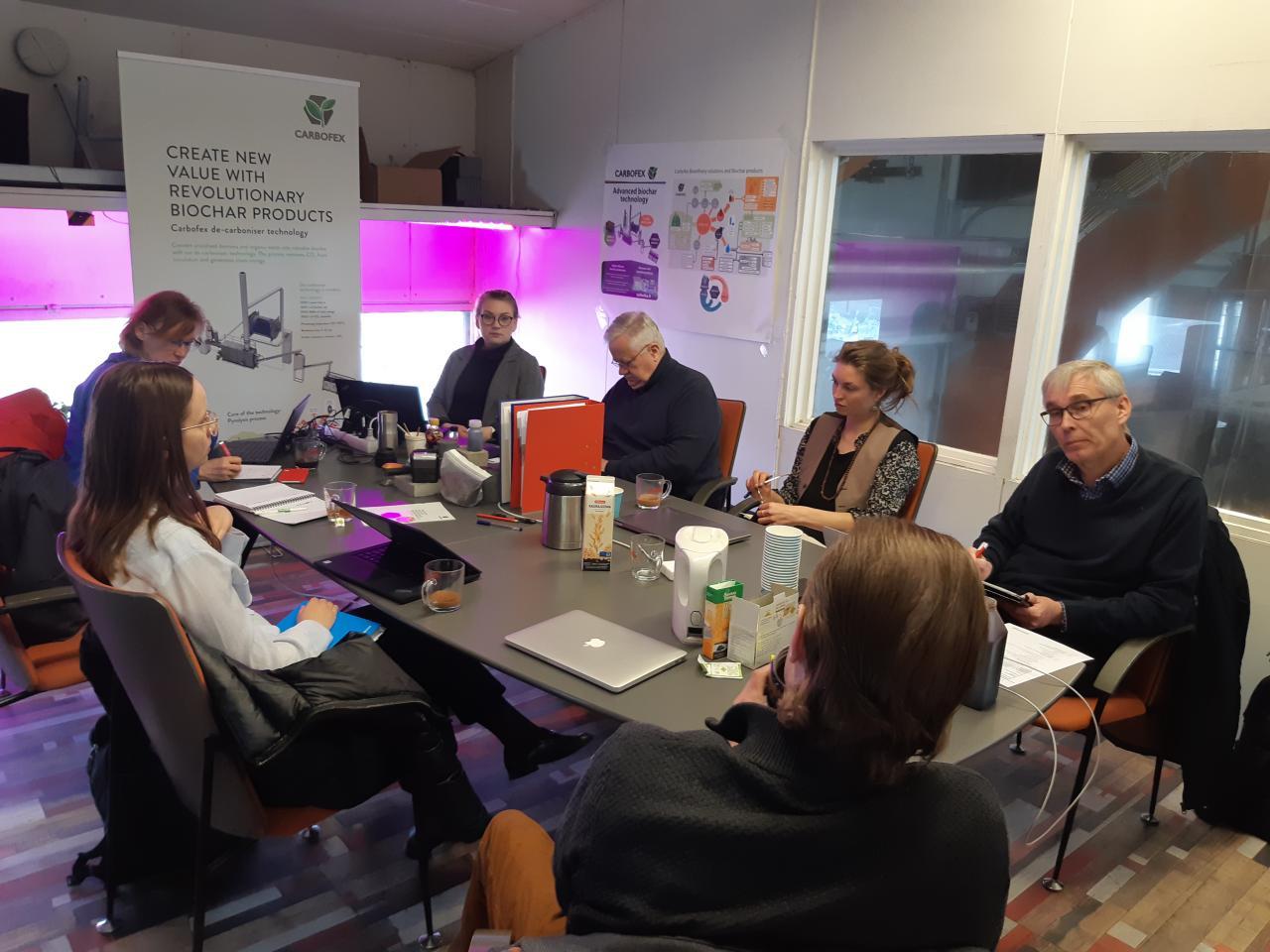
|
| |||||||||||
|
Also present were Carbofex's team: Sampo Tukiainen, CEO, Pia Iloranta, Development Manager, Janne Kantero, CFO, Anna Yrjönen, Executive Assistant and Kim Lehiö, Marketing and Customer Manager. From the Puro.earth team, we were Marianne Tikkanen, Co-Founder and Supply Development, Roosa Räisänen, Supplier Manager and Elba Horta, Business Development and Content Marketing. |
While some of the team worked with the auditor, Pia Iloranta, Development Manager, showed us the process of producing the biochar. Biochar is a negative emissions technology recognized by the IPCC, as pyrogenic carbon capture and storage (PyCCS), and one of the carbon removal methodologies certified by Puro.earth. It is made by pyrolysis, a process where biomass is kept in very high temperatures in the absence of oxygen. The carbon has been captured via photosynthesis by plants and trees, and the resulting solid is a mineralized material that is almost pure carbon (C-content above 50%). Chemically, biochar has stronger bonds that the original woody biomass and thus does not decompose and return back to the atmosphere.
In the case of Carbofex, their biochar is produced from PEFC-certified biowaste from sustainable forestry, specifically, spruce thinnings. (Thinning is the process of cutting some trees to increase growth rates in the remaining ones.)
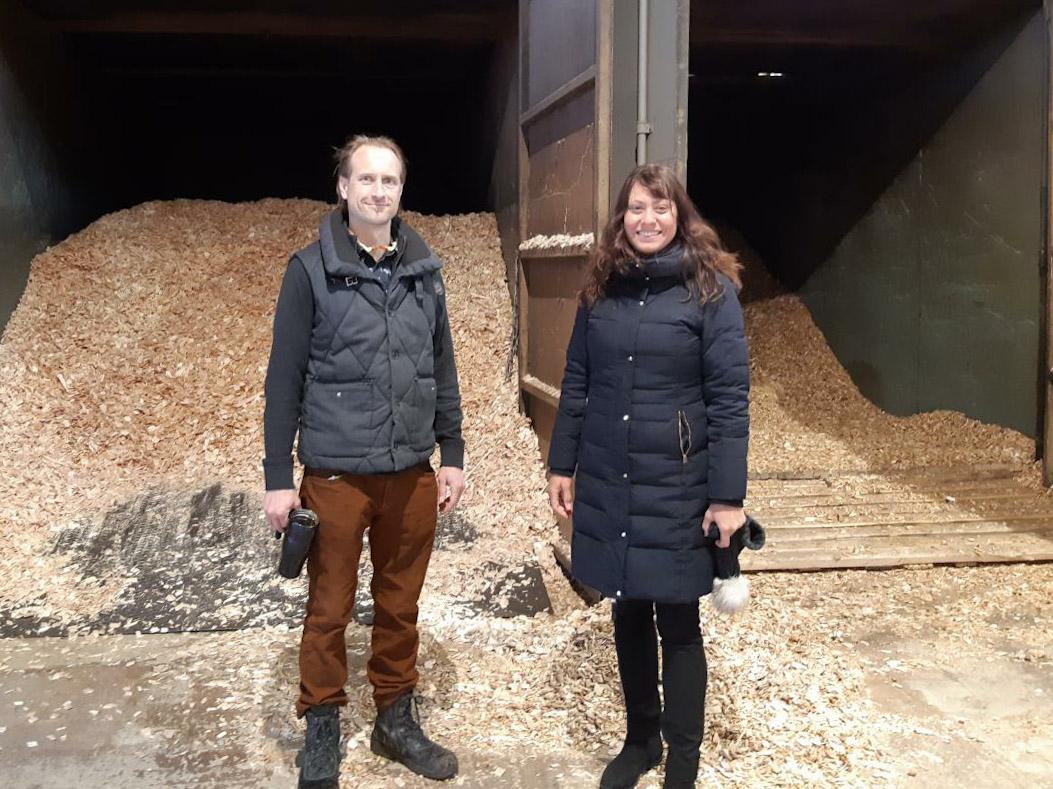
|
Photo: Sampo Tukiainen and Elba by the spruce chips, which will be converted to permanent biochar. |
The spruce thinnings come from very close by and are chipped in-house. The woodchips can be seen behind Sampo and Elba in the photo above, in an old drier used as storage.
Carbofex has a new dryer - thanks to the revenue from CORCs – and with it Carbofex is now able to process larger quantities of wood chips per day. This brings the automation of the plant to another level: with the addition of the new drier the whole production process is completely automated from raw material storage and handling, to carbonization, to packing the biochar.
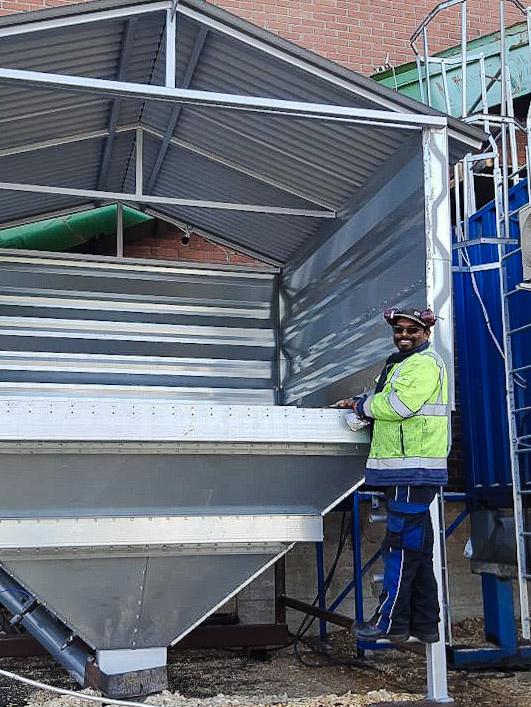
|
Photo: Rishikesh Mohanta, Production Worker, at the new dryer. |
Back inside, the wood chips go through a conveyor belt towards a buffer silo for intermediate storage and then move to the pyrolysis reactor. Carbofex’s reactor burns at ~700 °C . The carbonization is done without any chemicals, which makes this biochar free of carcinogens and suitable even for animal feeding applications.
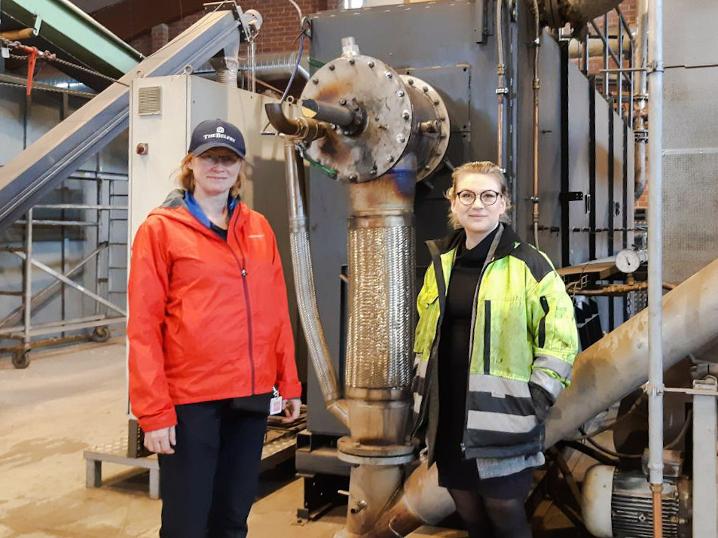
|
Photo: Pia Iloranta, Development Manager and Marianne Tikkanen from Puro.earth in front of the pyrolysis reactor at Carbofex. |
The actual pyrolysis process inside the reactor takes approximately 5 to 10 minutes and then the biochar, which has 93,6% (db) carbon content, is directed to cooling and packaging. After this state-of-the-art process a kilo (kg) of the resulting biochar embodies 3,43 kg of CO2 and has caused 0,157 kg of fossil CO2 emissions from cradle-to-gate i.e. from harvesting the wood to packing at the plant. That and other verification topics, defined in Puro.earth standard, were audited by Heikki Lahtinen from DNV GL while we were sightseeing the plant.
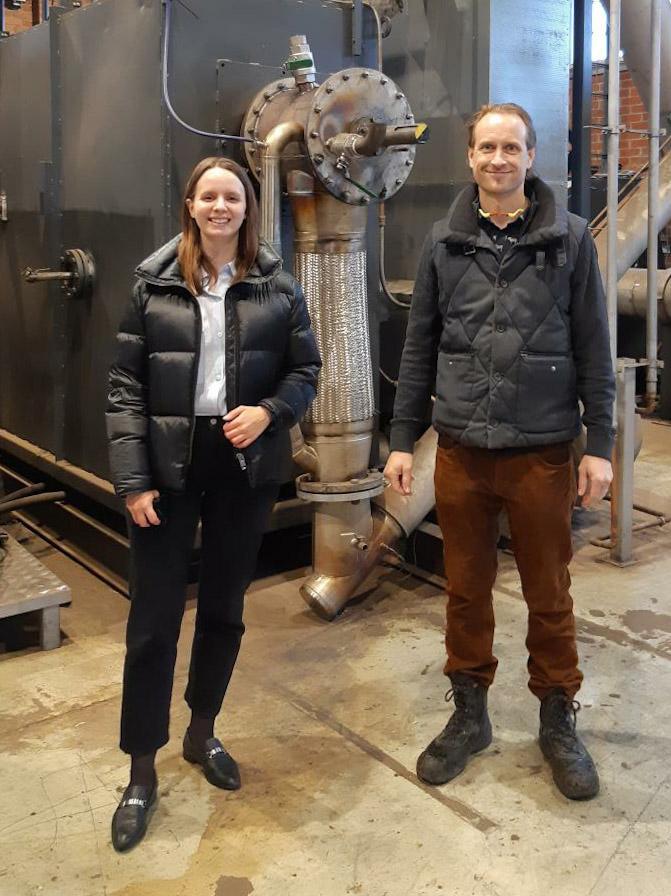
|
Photo: Roosa Räisänen from Puro.earth and Sampo Tukiainen, CEO of Carbofex, in front of the biochar reactor. |
Biochar is used as a growing media in city parks, gardens, greenhouses, and agriculture. Its internal honeycomb-like structure enhances plant growth and crop yield by storing nutrients and beneficial microbes, and increasing water retention. A gram of biochar has the surface area of a tennis court, which makes it highly absorbent of both nutrients and pollutants. The large absorbing area of Carbofex biochar (279 m2/g) makes it also ideal for water filtering and leak prevention applications.
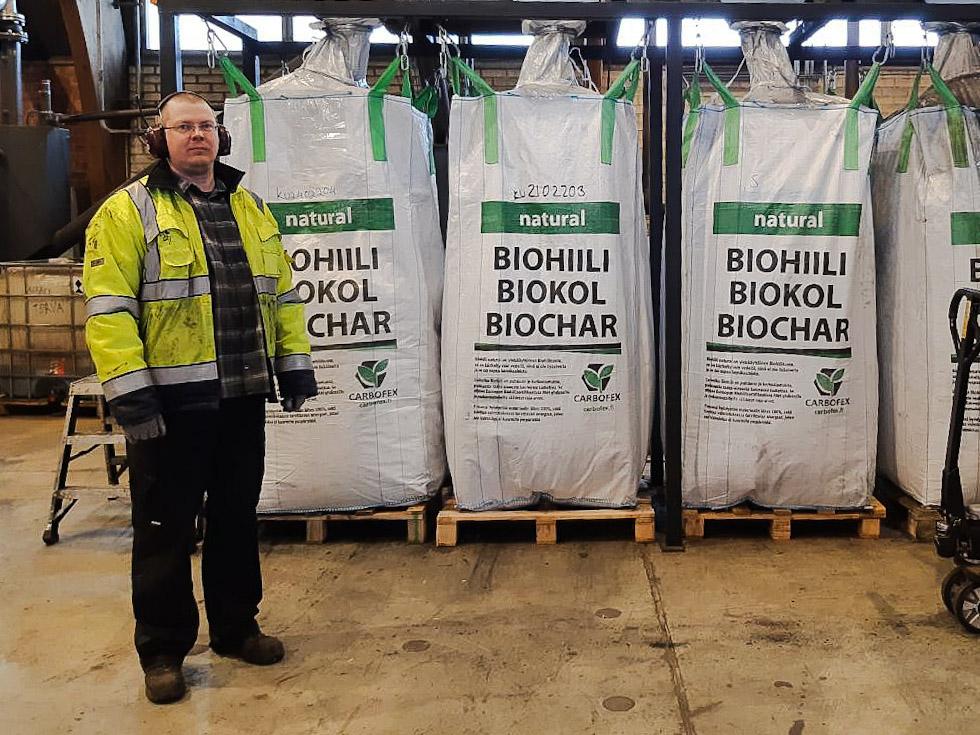
|
Photo: Jari Kananen, Production Manager, showing the last step in the process, packing the biochar. Then it is sent to customers, and used for example, in the City of Stockholm’s parks. |
Renewable energy for the factory and the community’s use
But the story does not end there. Carbofex not only performs carbon sequestration, but also uses the resulting co-products, pyrolysis oil and gas. In a feedback loop, the gas produced by the pyrolysis is recycled to fuel the reactor and any excess heat is used to dry the woodchips. This self-sustaining process means no external energy is needed at all at this factory. In fact, Carbofex has energy also for others. Carbofex has a district heating boiler attached to its reactor and produces 1 MWh of district heating in the winter for nearby apartment buildings in the surrounding community.
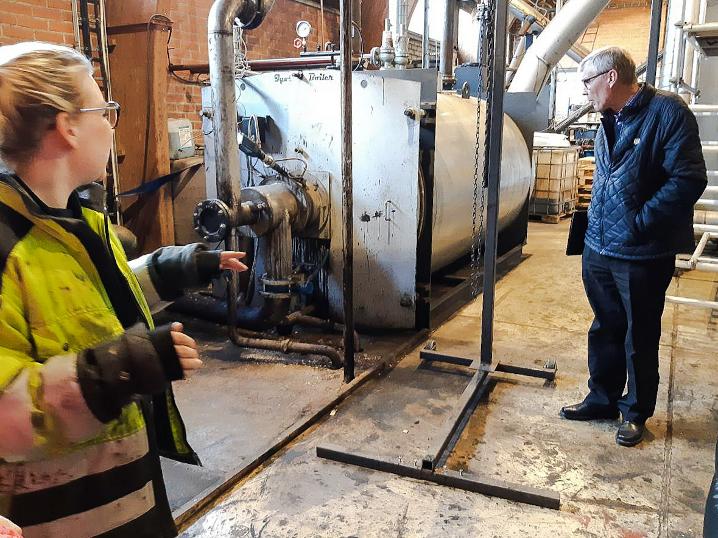
|
Photo: Pia Iloranta and DNV GL auditor Heikki Lahtinen, during the audit, by the district heating boiler. |
To purchase carbon removals from Carbofex, visit their Puro.earth supplier page.
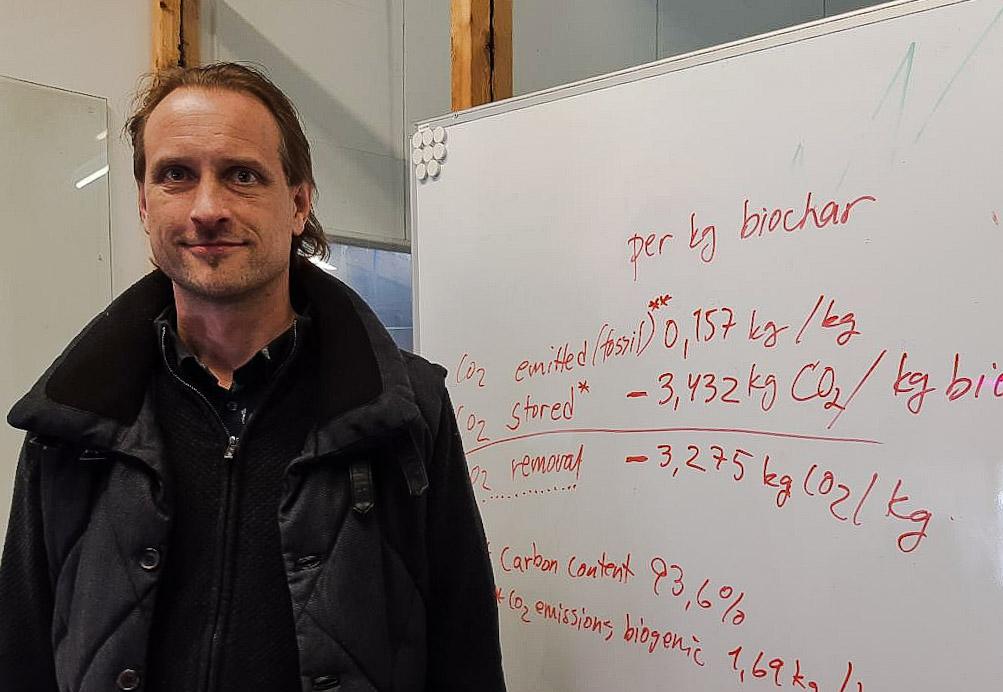
|
Photo: Sampo Tukiainen, showing the net-negativity figures of Carbofex biochar. |
If you are ready to include carbon removal in your climate actions, don't hesitate to book a meeting or contact us.

